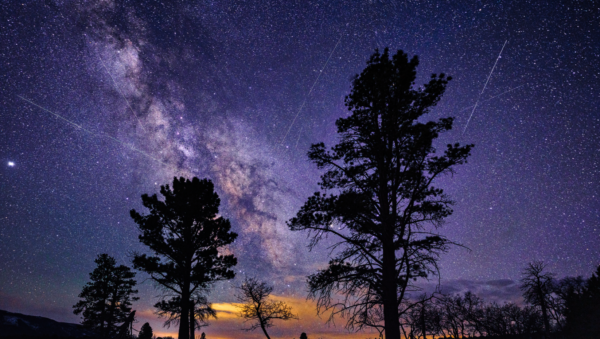Saturday, April 15 marks the beginning of the annual Lyrid Meteor Shower, which will be visible across the night sky. According to NASA, the celestial spectacle will be visible from April 15 to April 29, 2023, with its zenith occurring between April 21 and April 22, 2023.
During the apex, skywatchers can anticipate the greatest number of shooting stars during the late-night hours of April 21 and the early hours preceding daylight on April 22.

The meteors, named after the Lyra constellation, are Comet Thatcher debris.
According to Smithsonian magazine, approximately 18 meteorites will be visible per hour. Peter Veres, a research scientist at the Harvard-Smithsonian Center for Astrophysics’ joint organization with the Minor Planet Center, told the magazine that the Lyrids won’t be as numerous as the well-known summer Perseids, but the shower is still noteworthy: the Lyrids are one of only about ten meteor showers that produce more than ten meteors per hour at their peak.
According to EarthSky.org, the optimal viewing time will occur just before sunrise, when it is the darkest. Nevertheless, the 2023 Lyrid meteor shower may be visible as early as 10:30 p.m. on its peak evenings.

Lyrids are fast and bright. They flash across Earth’s atmosphere.
According to NASA, Lyrid meteors are known for their speed and brilliance. As they streak through the Earth’s atmosphere, Lyrids do not typically leave behind lengthy, glowing dust trails, but they can produce the occasional brilliant explosion known as a fireball.
NASA reports that Lyrid meteors have been observed for the past 2,700 years and are known to leave luminous dust traces and streaks as they pass through the night sky. Meteors named after the Lyra constellation of stars are part of a debris field left behind by Comet Thatcher, which is presently hurtling away from the Sun through the solar system. In another 45 years, its trajectory will reverse. The comet is classified as a long-period comet, as its orbit around the sun takes 415 years.

